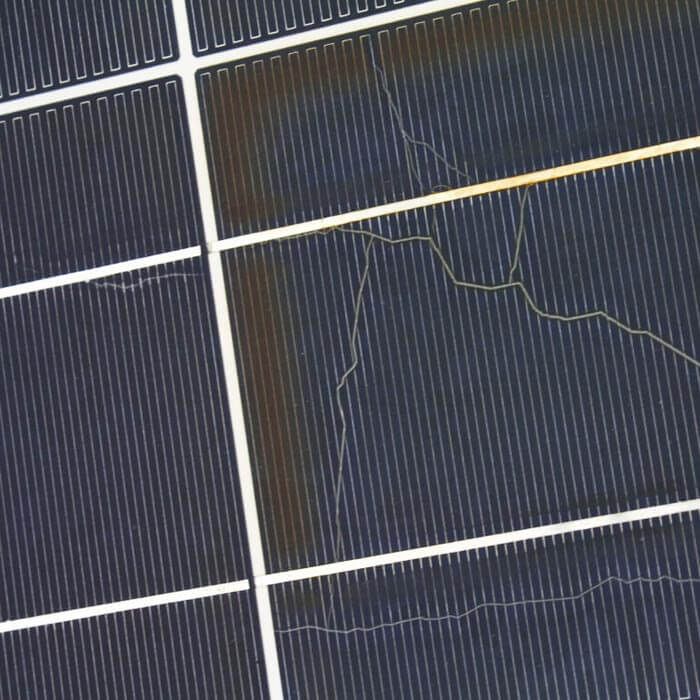
PV Crack Stress and Power Loss
| Project ID | a13f4716-8f75-49fd-9bd3-38940a6e5af1 |
|---|
High-Throughput Optical Mapping for Accelerated Stress Testing of PV Module Materials
DuraMAT 2.0 Project
Multi-Scale, Multi-Physics Model
Category: Mechanics and Cracking
Recipient Sandia National Laboratories (PI: Braid, Jennifer)
Subs Arizona State University
Status Awarded
Abstract Initial power loss immediately following cell fracture is highly variable, as it depends on the crack severity, location, and shape, among other characteristics. The associated power loss in the years of operation following the fracture event is even more difficult to forecast, as the evolution of cell crack properties is not well understood. The goal of this project is to develop a model chain to answer the following questions about PV cell cracks:
- How does a crack change the electrical properties of a cell and what is the power loss?
- (How) will the mechanical stress and electrical properties of these cracks evolve?
- What will be the impact of these cracks on module power in the future?
To address the above questions in a predictive way, we consider cracks as existing physical, mechanical, and electrical features in the silicon PV cell. Crack formation in PV modules is a binary, probabilistic event that is difficult to predict in the real world due to the unpredictability of crack-inducing events. However, the evolution of crack-correlated mechanical and electrical properties under normal operating conditions are well-suited to predictive modeling. This project will establish comprehensive, physics-informed models and tools to quantify cell crack spatial, mechanical, and electrical properties, and predict future crack power loss. We will combine in-situ measurement of internal cell stress, finite element modeling of modules/cells, image and electrical characterization techniques, dynamic mechanical loading, and automated image analysis and parameterization to build a predictive model for cell crack behavior in PV modules.
Cite the following datasets from the work:
PVCracks trained VAE models: 10.21948/2997860
Multi Sol Segment Weights: 10.21948/2997859
Multi Sol Segment Labeled EL Images 10.21948/2587738
